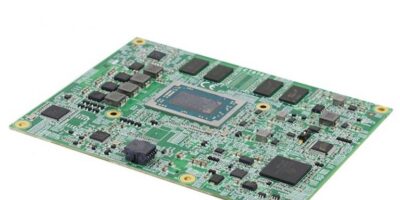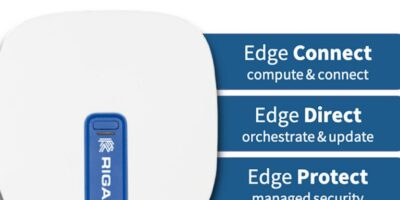Targeting graphics intensive devices which demand reliable performance to maintain stable operation, the ET976 is a Computer on Module (COM) Express Compact Type 6 module, developed by IBASE Technology.
The application-specific industrial embedded computing manufacturer has developed the ET976, powered by AMD Ryzen Embedded V1000 SoC, for industrial automation, medical imaging, transportation, gaming as well as payment systems and ATM machines.
The ET976 is available with a scalable selection of AMD Ryzen SoCs including V120B, V1605B, and V1807B and Radeon Vega 3 graphics that offer twice the level of performance when compared to its predecessor. The 125 x 95mm module is built with up to 8Gbyte of DDR4 RAM (supports ECC) and provides triple independent display ports, a Gigabit Ethernet and a high definition audio controller. It also supports a variety of the high-speed interfaces on the carrier board such as eight USB 2.0, four USB 3.1, and two SATA III.
Wilson Lin, director of IBASE Product Planning, observed: “The Ryzen line-up based on AMD’s new Zen micro-architecture, delivers significantly increased computing and graphics performance to meet the growing needs of today’s embedded technologies.”
Established in 2000, IBASE Technology specialises in the design and manufacturing of application specific embedded industrial PC products. Manufacturing and quality control is at its own production sites in Taiwan that are certified to meet ISO 9001, ISO 13485 and ISO 14001 standards. Its core strength is in OEM/ODM/JDM services, and its current standard product range comprise of x86 and RISC-based industrial motherboards, embedded systems, industrial panel PCs, digital signage players and network appliances for applications in the automation, digital signage, gaming, transportation, smart building, medical, retail and networking markets.
IBASE is an Associate member of the Intel Internet of Things Solutions Alliance. From modular components to market-ready systems, Intel and the 250+ global member companies of the Intel Internet of Things Solutions Alliance provide scalable, interoperable solutions that accelerate deployment of intelligent devices and end-to-end analytics. Close collaboration with Intel and each other enables Alliance members to innovate with the latest technologies, helping developers deliver first-in-market solutions, says IBASE.







